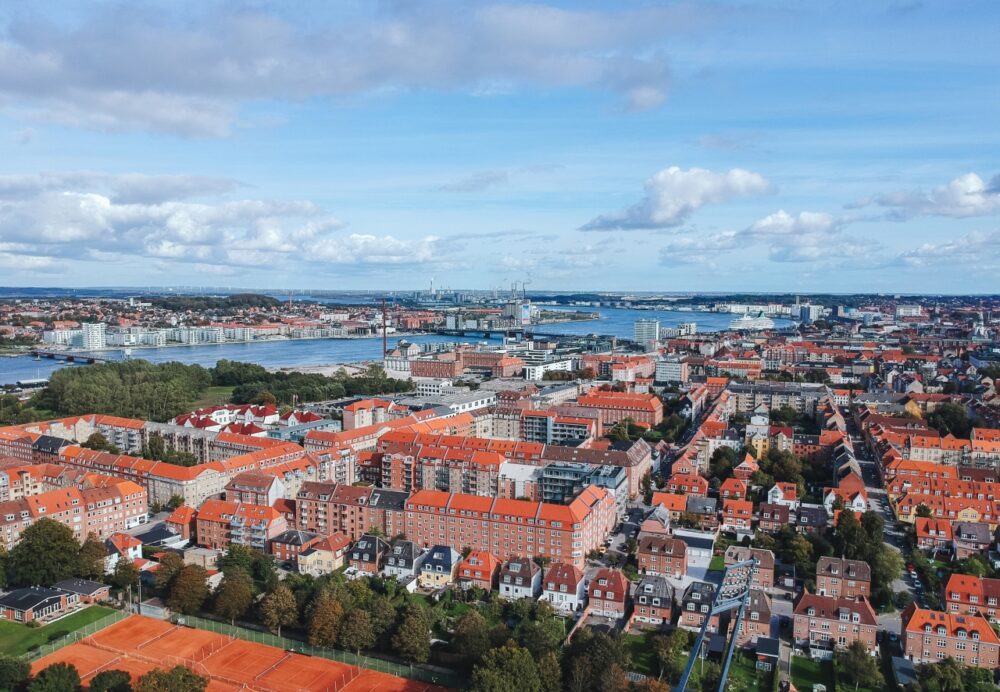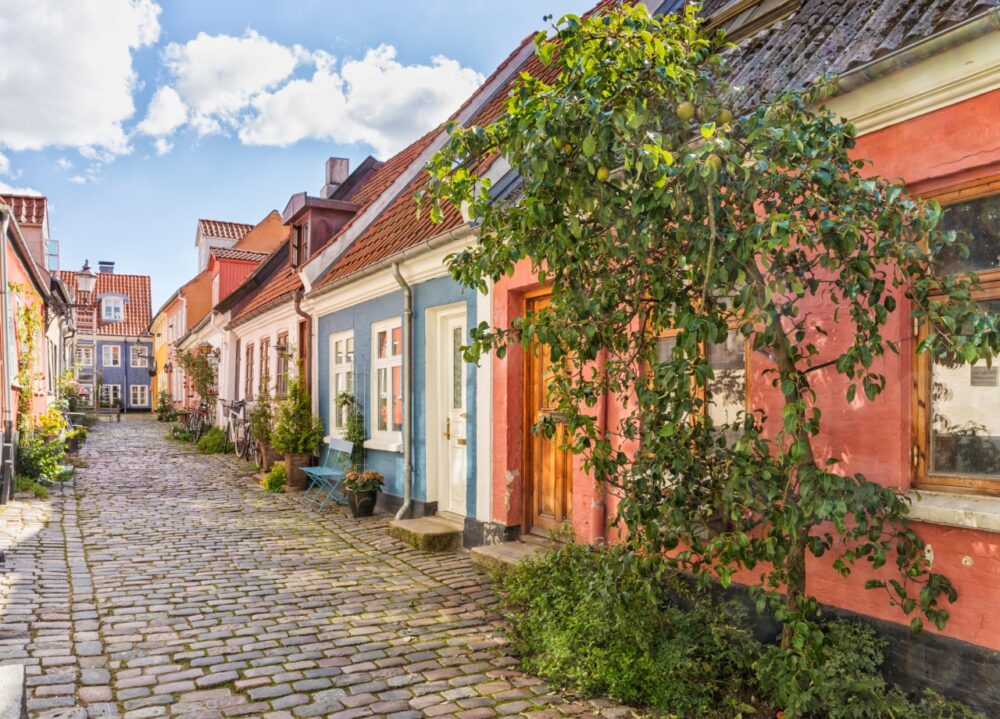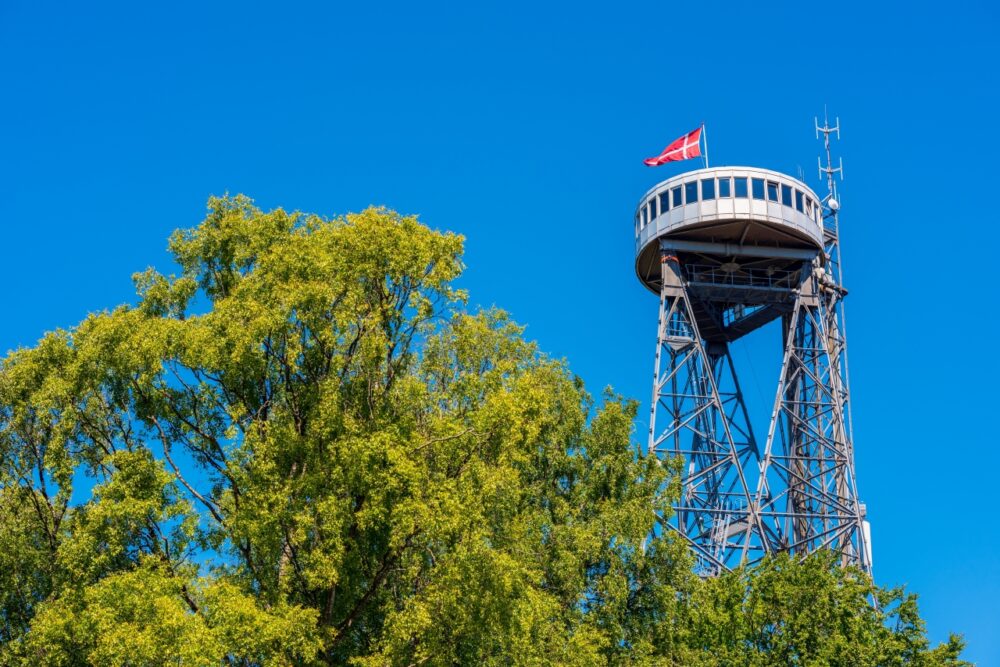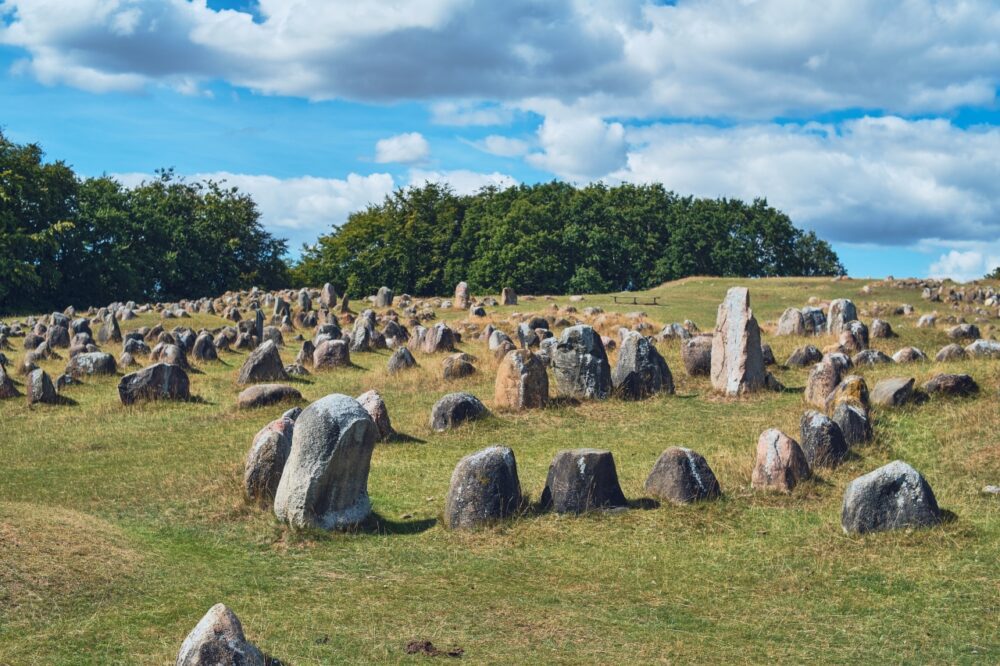
Is Aalborg worth visiting? Without a doubt! The first time I visited Aalborg, I was pleasantly surprised by the city’s vibrant energy and rich history. Strolling along the waterfront, with its modern architecture and buzzing cafés, and then delving into the charming streets of the old town, I realised Aalborg offers a unique mix of tradition and innovation.
Located in northern Denmark, Aalborg is a city that blends Viking heritage with contemporary culture. Known for its iconic Utzon Center, lively nightlife, and scenic views along the Limfjord, Aalborg has something for everyone. Whether you’re exploring the fascinating Lindholm Høje Viking burial grounds, enjoying local Danish cuisine, or admiring street art in the creative district of Aalborg Øst, this city is full of delightful surprises. But is Aalborg worth visiting for you?
In this blog post, we’ll explore the top 10 reasons why Aalborg should be on your travel list, from its historical landmarks to its cultural highlights. Plus, we’ll share some insider travel tips to help you plan the perfect trip. Keep reading, and you’ll see why Aalborg is one of Denmark’s hidden gems waiting to be discovered.
Table of Contents
Pros – Reasons You Should Visit Aalborg
1. A Beautiful Waterfront with a Modern and Vibrant Atmosphere
Aalborg’s waterfront has undergone a major transformation in recent years, turning what was once an industrial port into one of the most attractive areas of the city. With stylish modern buildings, scenic walking paths along the Limfjord, and lively cafés, the waterfront is a great place to relax, take a stroll, or enjoy a meal with a view of the water.
I spent an afternoon walking along the promenade, watching sailboats drift by and soaking in the peaceful atmosphere. The blend of old and new architecture along the fjord gives Aalborg a unique character. One of the highlights was the Utzon Center, an impressive cultural hub dedicated to the works of Danish architect Jørn Utzon, who famously designed the Sydney Opera House. If you enjoy cities that successfully balance history with modern design, Aalborg’s waterfront is a must-see.
2. The Historic Aalborg Old Town is Full of Character

Aalborg’s old town is packed with history, featuring well-preserved half-timbered houses, cobblestone streets, and beautiful old churches. Walking through the city center, you’ll find charming squares, lively pedestrian streets, and historic buildings that date back centuries. One of the most interesting landmarks is Jens Bang’s House, a stunning 17th-century Renaissance building that stands as one of the city’s most iconic structures.
I loved wandering through the old town, where small boutique shops and cozy cafés line the narrow streets. The atmosphere is inviting and lively without feeling overly crowded or touristy. Unlike bigger cities, Aalborg’s historic center has a relaxed and intimate feel, making it a wonderful place to explore at your own pace.
3. Aalborg Tower Offers Stunning Views of the City and Fjord

For the best panoramic views of Aalborg and the surrounding fjord, a visit to the Aalborg Tower is highly recommended. This 55-meter-high observation tower provides a spectacular vantage point over the city’s rooftops, the Limfjord, and the surrounding countryside.
I visited just before sunset, and the golden light over the water and cityscape was absolutely breathtaking. The tower itself has a bit of an old-school charm, with an elevator ride that feels like stepping back in time. If you enjoy seeing cities from above and getting a sense of their layout, this is one of the best places in Aalborg to do so.
4. A Thriving Street Art Scene Adds Color to the City
Aalborg has a surprisingly vibrant street art scene, with large-scale murals decorating buildings throughout the city. Over the past decade, the city has embraced urban art, and today, you can find incredible pieces created by both Danish and international artists. Many of these works were commissioned as part of the annual “We AArt” festival, which brings new murals to the city every year.
I spent a morning walking around Aalborg’s neighborhoods, hunting for murals and hidden artworks. It was exciting to turn a corner and suddenly be met with a massive, colorful piece of street art. The contrast between the historic buildings and the modern murals gives the city a fresh, creative energy. If you enjoy street art and urban culture, Aalborg is a fantastic place to explore.
5. One of the Best Places to Experience Viking History

Aalborg has deep Viking roots, and history lovers will enjoy visiting Lindholm Høje, one of the best-preserved Viking burial sites in Denmark. Located just outside the city, Lindholm Høje features hundreds of ancient stone burial markers, as well as a museum that provides fascinating insights into Viking life and culture.
Walking among the Viking graves, I could almost feel the weight of history beneath my feet. The museum does a great job of explaining how the Vikings lived, traded, and buried their dead, with interactive exhibits that make it engaging for all ages. If you have even a slight interest in Viking history, Lindholm Høje is an unforgettable experience.
6. Aalborg’s Nightlife is Some of the Best in Denmark
For a city of its size, Aalborg has a surprisingly energetic nightlife scene. Jomfru Ane Gade, the city’s famous party street, is packed with bars, pubs, and nightclubs that stay open late into the night. It’s known throughout Denmark as one of the best places to experience nightlife outside of Copenhagen.
I went out on a Saturday night, and the energy along Jomfru Ane Gade was infectious. Whether you’re looking for a quiet craft beer bar or a lively club with music and dancing, there’s something for everyone. The best part is that everything is close together, so you can easily hop from one place to another without needing transportation. If you enjoy nightlife, Aalborg won’t disappoint.
7. Kunsten Museum of Modern Art is a Cultural Highlight
Aalborg is home to one of Denmark’s most impressive modern art museums, the Kunsten Museum of Modern Art. Designed by renowned Finnish architect Alvar Aalto, the museum itself is a work of art, featuring a sleek, minimalist design that allows the artwork inside to take center stage.
I spent a couple of hours exploring the museum’s collection, which includes works by Danish and international artists, as well as rotating exhibitions that showcase contemporary talent. Even if you’re not typically a fan of modern art, the museum’s architecture and atmosphere make it worth a visit. The outdoor sculpture garden is also a nice place to relax and reflect after exploring the galleries.
8. Aalborg Carnival is the Largest in Northern Europe
Every May, Aalborg hosts one of the biggest and most colorful festivals in Northern Europe: Aalborg Carnival. This week-long event culminates in a massive street parade, where thousands of people dress up in elaborate costumes and dance through the streets to live music.
I was lucky enough to visit during the carnival, and the energy was incredible. The entire city comes alive with music, performances, and creative costumes. Whether you participate in the parade or just watch from the sidelines, it’s an unforgettable experience. If you’re looking for a unique festival atmosphere in Denmark, Aalborg Carnival is the perfect time to visit.
9. Aalborg is a Great Base for Exploring North Jutland
Aalborg’s location makes it an ideal base for exploring the wider North Jutland region. From here, you can take easy day trips to some of Denmark’s most stunning coastal areas, including the dramatic sand dunes of Råbjerg Mile, the historic fishing village of Skagen, and the windswept beaches of the North Sea.
I took a short trip to Skagen, where the North Sea and the Baltic Sea meet in a fascinating natural phenomenon. The scenery was breathtaking, and the small-town charm of Skagen was a refreshing contrast to the city. If you enjoy nature, beaches, and outdoor activities, Aalborg is perfectly positioned for exploring the best of northern Denmark.
10. A Laid-Back and Friendly Atmosphere
One of the things I loved most about Aalborg was its relaxed and friendly vibe. The city has all the conveniences of a larger urban area but without the stress and fast pace of bigger cities. People were warm and welcoming, and there was a strong sense of community throughout the city.
I had several great interactions with locals, from friendly baristas to helpful shop owners who took the time to recommend places to visit. Unlike some larger European cities where people can feel rushed or distant, Aalborg felt genuinely inviting. Whether you’re sitting in a café, exploring a museum, or just wandering through the streets, the city’s laid-back atmosphere makes it an enjoyable and stress-free place to visit.
Cons – Things to Consider When Visiting Aalborg
1. Aalborg is a Small City with Limited Attractions Compared to Larger Destinations
While Aalborg has a great mix of history, culture, and nightlife, it is still a relatively small city. Unlike Copenhagen or Aarhus, it doesn’t have an overwhelming number of museums, landmarks, or must-see attractions, which means that many visitors can see the main sights in just a day or two. After exploring the waterfront, the old town, and a few museums, some travelers may find themselves wondering what else there is to do.
I spent three full days in Aalborg, and by the end of the second day, I felt like I had already covered most of the major highlights. While I enjoyed the city’s relaxed atmosphere, I could see how it might not hold the attention of travelers looking for a destination with endless things to explore. If you prefer a city with a long list of iconic attractions, Aalborg might not be the best choice for an extended stay. However, if you’re happy with a slower pace and using the city as a base for day trips around North Jutland, it can still be a rewarding destination.
2. The Weather Can Be Unpredictable and Often Windy
Like much of Denmark, Aalborg experiences unpredictable weather, with frequent rain showers, grey skies, and strong winds, particularly in the fall and winter months. The city’s location in northern Denmark means that it can be significantly colder and windier than other parts of the country, especially when the wind comes off the Limfjord. Even in summer, temperatures can be mild at best, and there’s always a chance of sudden rain.
I visited in late September and was surprised by how quickly the weather changed throughout the day. One moment, it was sunny and pleasant, and the next, I was caught in a chilly drizzle that seemed to come out of nowhere. The wind, in particular, made it feel colder than it actually was, especially when walking along the waterfront. If you’re planning to visit Aalborg, it’s best to dress in layers and always carry a rain jacket or umbrella. The weather won’t necessarily ruin your trip, but it’s something to be prepared for.
3. The Cost of Visiting Can Be High Compared to Other European Cities
Denmark is generally an expensive country to visit, and Aalborg is no exception. While it is slightly more affordable than Copenhagen, prices for accommodation, dining, and entertainment can still be high compared to other European destinations. Eating out, in particular, can be pricey, with even casual meals at restaurants costing significantly more than what you might pay in Germany, Spain, or Eastern Europe.
I was surprised at how much a simple meal at a mid-range restaurant cost. Even a basic burger and fries at a casual eatery came with a hefty price tag, and drinks at bars were not cheap either. Accommodation is another factor to consider—while there are budget options available, hotels and Airbnbs tend to be on the expensive side, especially during peak travel seasons. If you’re traveling on a budget, it’s a good idea to plan ahead by looking for more affordable dining options, such as bakeries and supermarkets, and booking accommodations well in advance.
4. Public Transportation is Limited and Not Always Convenient
Aalborg is a very walkable city, and cycling is a great way to get around, but for those who rely on public transportation, the options can feel somewhat limited. While there is a local bus network, it doesn’t operate as frequently or as efficiently as the metro systems in larger Danish cities. Some areas outside the city center, such as Lindholm Høje or attractions in North Jutland, require a car or careful planning to reach by public transport.
I found that while buses were available, they weren’t always the most convenient option, especially in the evenings or on weekends when service is less frequent. Getting to places outside Aalborg, like the beaches along the North Sea or small coastal villages, required checking bus schedules in advance and sometimes waiting longer than expected. If you plan to explore beyond the city, renting a car is highly recommended to avoid relying on inconsistent public transport.
5. The Winter Months Can Feel Dark and Quiet
Like many cities in Scandinavia, Aalborg can feel very quiet and dark during the winter months. The days are short, with limited daylight hours, and the cold, wet weather can make outdoor activities less enjoyable. While the city does have a cozy atmosphere, with Christmas markets and festive decorations in December, the overall energy is much lower compared to the livelier summer months.
I visited Aalborg in late autumn, and while I enjoyed the peacefulness, I noticed that some restaurants, shops, and attractions had reduced hours or even closed earlier than expected. The nightlife scene, which is one of the city’s highlights in the warmer months, also felt more subdued, with fewer people out and about. If you’re visiting in winter, it’s best to plan for more indoor activities, such as museums and cafés, rather than expecting a bustling city atmosphere. For those who don’t mind the colder, quieter months, Aalborg still has its charm, but if you prefer an active and vibrant city experience, visiting in spring or summer is a better choice.
When to Visit Aalborg
The best times to visit Aalborg are late spring (May to June) and early autumn (September), when the weather is mild and Aalborg’s parks and waterfront areas come to life. In these shoulder seasons, you can enjoy the city’s historic streets, cosy cafes, and attractions without the summer crowds. Summer (July and August) is peak season, with warm weather, festivals like the Aalborg Carnival—one of Scandinavia’s largest—and a lively outdoor atmosphere, especially along the Limfjord waterfront. Winter in Aalborg is quieter but charming, especially in December, when the Christmas markets and lights create a festive atmosphere.
How to Get to Aalborg
Aalborg Airport (AAL) is located just 6 kilometres from the city centre, with direct flights from Copenhagen, Amsterdam, and London on airlines like SAS, KLM, and Norwegian Air. From the airport, you can catch a direct bus to the city centre, which takes around 15 minutes, or opt for a taxi for a quicker ride. Aalborg is also accessible by train, with regular direct services from Copenhagen and other major Danish cities, offering a scenic and comfortable journey across Denmark.
Where to Stay in Aalborg
Aalborg offers a range of accommodation options across its distinct neighbourhoods:
- Luxury: City Centre – Close to Jomfru Ane Gade and the Limfjord waterfront, Aalborg’s centre is ideal for exploring the city’s main sights. Top choices include Comwell Hvide Hus Aalborg and Radisson Blu Limfjord Hotel, offering high-end comfort and easy access to the main attractions.
- Mid-range: Vestbyen – A relaxed area with a local vibe and good public transport links to the city centre. Hotel Aalborg and Scandic Aalborg City provide modern amenities and a welcoming atmosphere.
- Budget: Øgadekvarteret – A bit outside the city centre but within walking distance, this area has affordable options like CABINN Aalborg and Aalborg City Rooms, perfect for budget-conscious travellers.
Getting Around Aalborg
Aalborg’s compact city centre makes it easy to explore on foot, with many attractions like Aalborg Zoo, Utzon Center, and Aalborghus Castle within a short distance. For longer journeys, the NT bus system offers an affordable and efficient way to get around, with single tickets and day passes available. Aalborg is also bike-friendly, and you can use the Donkey Republic bike-sharing system, which has stations around the city, perfect for a scenic ride along the waterfront or through the city’s parks. Taxis and car rentals are also available, though rarely necessary for exploring the city centre.
How Long to Spend in Aalborg
Two days is ideal for seeing Aalborg’s main highlights, including the Aalborg Zoo, Kunsten Museum of Modern Art, and the historic Old Town. With an extra day, you can explore the Limfjord area or take a day trip to Lindholm Høje, a fascinating Viking burial ground just outside the city. If you’re keen on local food and culture, consider staying three days to fully enjoy Aalborg’s vibrant cafes, waterfront views, and unique attractions, like the Aalborg Street Food Market and Jomfru Ane Gade, Denmark’s famous nightlife street.
Conclusion
So, is Aalborg worth visiting? Absolutely! With its fascinating Viking history, dynamic cultural scene, and stunning waterfront, Aalborg offers an experience that’s both enriching and enjoyable. Highlights like the Lindholm Høje burial site, the innovative Utzon Center, and the vibrant atmosphere of Jomfru Ane Gade make it a must-visit destination. While it’s less well-known than Copenhagen, that’s part of its charm—it feels intimate and authentic. If you’re ready to explore one of Denmark’s most underrated cities, start planning your trip to Aalborg today!
